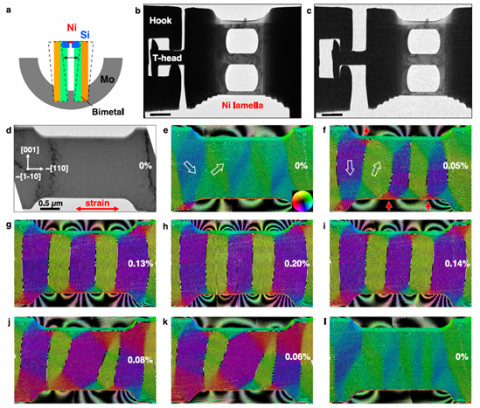New paper co-authored by physics faculty member emphasizes magnetization control at the nanoscale
Thu, 07/06/2023 - 6:01amMichalis Charilaou is one of the authors of the latest paper on nanoscale strain-induced changes in magnetization properties. The study of the link between structure and magnetism in matter has a long history, dating back to the 19th century when J. Joule and E. Villari discovered magnetostriction and magnetoelasticity. Since then, stress and stress annealing have found applications in the sensing, control and enhancement of magnetic properties in a wide range of materials and devices, ranging from magnetic random-access memory to energy harvesting and biomedicine. Despite the long history, the physics of magnetoelasticity on the nanoscale remains poorly understood. In this study, the team performed cutting-edge high-resolution imaging experiments by means of electron microscopy and holography as well as micromagnetic simulations and they discovered that when stress is applied on a thin ferromagnetic plate of Nickel, the magnetic domains in the plate change shape, as seen in the figure below which shows the magnetic field inside the sample.

By comparing these experiments with simulations, it was found that this changing texture of the magnetization in the material is the result of strain-induced magnetic anisotropy, i.e., a preferential direction of the magnetization is induced in the sample because of strain. The mechanism of this induced anisotropy lies in the small change of the distances between the atoms when the material experiences strain, where a small change in the atomic scale can have a dramatic scale in the nanoscale. Importantly, this change in the magnetic state has implications on the macroscopic properties of the material as well; its response to an external field will change. This suggests that thin ferromagnetic plates can be used as sensors for mechanical strain via magnetic signals.
You can access the published article here.
